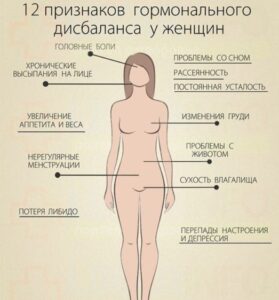Endogenous Hormones Changes in hormonal levels have a complex effect on the quality of human life. In addition to the deterioration of the physical condition, psycho-emotional deviations are observed, which can cause disruption of social ties. To avoid unpleasant consequences, doctors select a special medication course that restores the balance of the synthesis of substances. For example, Kliogest from a deficiency of endogenous hormones makes up for the lack of a substance that the body needs.

Synthesis:-
The main share of estrogen in women is produced by the ovaries through hormones with an androgenic effect. However, this is not the only source of the substance.
The level required for biological processes is reproduced:
- adrenal cortex (typical for both sexes);
- placenta during gestation.
Estrogen is divided into three groups:
- estradiol – produced by women of reproductive age;
- estriol – synthesized at all stages of pregnancy;
- estrone – formed at the stage of menopause.
In the process of movement in the blood plasma, part of the hormones binds to globulin. The rest freely moves through the bloodstream and is transported unchanged to vital organs and tissues.
Functions:-
According to research, estrogen is involved in the biological processes of all organs and systems. In girls during puberty, the hormone is responsible for several processes:
- the formation of the mammary glands;
- the appearance of hair on the pubis and in the armpits;
- start of menstruation, cycle adjustment.
Upon reaching adulthood, the functionality of the chemical grows. Notwithstanding the monthly cycle, estrogen influences the working of the cardiovascular framework is answerable for the condition of bone tissue, skin, and brain performance. Additionally controls the concentration of good and bad cholesterol in the blood. Regulates thrombosis. In addition, it corrects the mood.
Menstrual Cycle:-
The concentration of estrogen is determined by the phase of the cycle. It is divided into four groups:
- Menstrual phase. The start of the female cycle, assuming there is no pregnancy. All in all, a thickened layer of the endometrium is framed, which is required for the subsequent bearing of the fetus. If conception does not occur, the mucous layer is rejected and excreted from the body with blood. During this period, there is a low hormonal background.
- Follicular phase. Covers the period from the primary day of feminine cycle to ovulation. As the follicles with eggs develop, the centralization of estrogen increments. The pinnacle of action falls on ovulation. There is a thickening of the endometrium to give nourishment to the hatchling (dependent upon fruitful origination).
- Ovulation. The framed egg is delivered into the fallopian tubes, which are associated with the uterus. Here, the association of the sperm with the egg is done, trailed by the exchange of the undeveloped organism to the uterus. Without a trace of preparation, the egg passes on.
- Luteal phase. When the egg moves into the fallopian tube, the corpus luteum “delays” the ovary, delivering progesterone and estrogen. Together, the substances set up the uterus for treatment and childbearing. On the off chance that origination doesn’t happen, the movement of the corpus luteum stops. This prompts a diminishing in the centralization of estrogen and the beginning of feminine cycle.
The typical cycle length is 28 days (the term of the span can be changed from outer and hereditary elements). Ovulation happens in the cycle.
Endogenous Hormones Signs Of Deviations:-
The formation of a hormonal background is a complex, multi-stage process that can be disturbed by negative influences:
- genetic abnormalities;s
- increased response to s
- tressful situations;
- diseases;
- bad habits;
- sharp weight loss;
- medicines.

Hormonal abnormalities are manifested by pronounced symptoms:
- Violation of the menstrual cycle. Allocations become less frequent, or stop completely.’
- Increased sweating, hot flashes.
- Sleep disturbance. Mostly insomnia.
- Feeling of dryness in the vagina.
- Unreasonable mood swings.
- Decreased or complete absence of sexual desire. Indifference to sexual contact.
- Dryness of the skin.
The most common period of a drop in estrogen levels is menopause, which is accompanied by the cessation of menstruation with the subsequent development of an egg. Affects women over 45 years of age. In this condition, patients are vulnerable to the development of cardiovascular diseases, and osteoporosis.
To restore balance, the doctor prescribes a certain group of drugs that compensate for estrogen deficiency. This reduces the risk of developing chronic diseases, and reduces the degree of reaction to external stimuli, leading to mood swings. For more information visit our site.
Related:-



